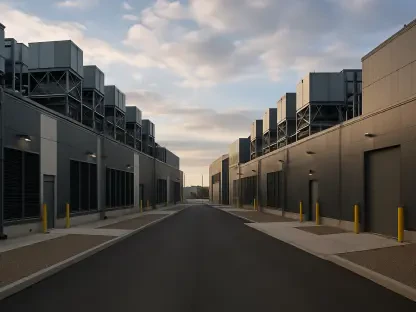In the bustling streets of the United Kingdom, where diesel vehicles dominate, a groundbreaking study has unearthed a subtle yet transformative insight into urban pollution dynamics. By delving into the minutiae of diesel car design, specifically exhaust placement, researchers have uncovered a substantial contributor to roadside pollution—one with straightforward solutions. As urban areas grapple with the detrimental health effects of vehicle emissions, this revelation could hold the key to cleaner city air. Using advanced techniques like plume regression and comprehensive sensor data, the study elucidates how exhaust location could drastically reduce pollutant levels, presenting a practical avenue for vehicle manufacturers and policymakers alike.
Unveiling Exhaust Dynamics in Vehicle Design
The Analysis of Exhaust Influence on Pollution Levels
Diesel cars have long been scrutinized for their contributions to deteriorating air quality, particularly in urban environments. The University of York’s investigation reveals that the exhaust’s positioning on these vehicles plays a critical role in pollution dispersion, a factor many might presume inconsequential. Using advanced sensors, the researchers applied plume regression models to accurately measure pollution diffusion patterns linked to different vehicle exhaust placements. The compelling outcome showed that cars with exhausts located on the offside (right side) emitted significantly less roadside pollution than those with nearside (left) exhausts. This simple shift in design could slash roadside emissions by roughly one-third, emphasizing an overlooked facet of vehicle design impacting environmental health.
Implications for Current Vehicle Design Standards
Presently, 80% of diesel vehicles within the UK have exhaust systems traditionally built on the nearside. This legacy stems from the fact that many of these vehicles originate from countries that predominantly drive on the right, inadvertently exacerbating pollution issues in the UK. By switching exhaust placement to the offside, these vehicles could drastically reduce their environmental footprint, providing a cost-effective strategy for manufacturers to address pollution concerns. This finding not only highlights the nuanced relationship between vehicle design and urban air quality but also opens doors for policymakers to influence future standards encouraging better exhaust positioning to enhance public health outcomes.
Electric Vehicles: An Unintended Air Quality Ally
The Role of Electric Vehicles in Mitigating Pollution
Electric vehicles, rapidly gaining traction in the wake of environmental advocacy and policy shifts, bring unanticipated benefits to urban air quality. While inherently non-pollutive, EVs possess an additional, subtle utility. Through vehicle-induced aerodynamics, they help disperse pollution plumes from fossil fuel-powered neighbors. This study illuminated how EVs, through their design and movement, contribute to reducing the concentration of roadside pollutants from adjacent diesel vehicles. The presence of EVs creates a turbulence effect, dispersing pollutants more widely and reducing their localized impact. This beneficial secondary effect highlights how EVs can indirectly support urban pollution reduction efforts beyond merely reducing emissions themselves.
Strategic Implications for Manufacturers and Policymakers
As the transition toward electric vehicles gains momentum, these findings offer strategic insights for stakeholders aiming to enhance air quality. The benefits of EV adoption extend beyond direct emissions reduction, underscoring the importance of accelerating their presence on roads. For manufacturers, this presents an opportunity to innovate and market EVs not only as eco-friendly alternatives but as active participants in improving urban environments. Policymakers can leverage these insights to draft policies encouraging electric vehicle conversion while modifying existing vehicles for better exhaust placements. These strategic steps can lead to a holistic approach to urban pollution management, coupling electric mobility advancements with smarter design requirements for diesel vehicles.
Reflections on Urban Vehicle Pollution and Design Choices
In the lively streets of the United Kingdom, where diesel vehicles predominantly traverse, a groundbreaking study has revealed key insights into the dynamics of urban pollution. This research delves into the details of diesel car design, especially focusing on exhaust placement to identify a significant factor causing roadside pollution, along with some simple solutions. As cities struggle with the harmful health impacts of vehicle emissions, this finding might offer a solution for improving urban air quality. By employing advanced methodologies, such as plume regression analysis and collecting extensive sensor data, researchers highlight the importance of exhaust positioning in reducing pollution levels. This presents a practical route for both vehicle manufacturers and policymakers in their quest for cleaner air. The potential of this study to transform urban areas is immense, offering further hope that a healthier environment can be achieved with strategic adjustments to vehicle design and policy implementation.









